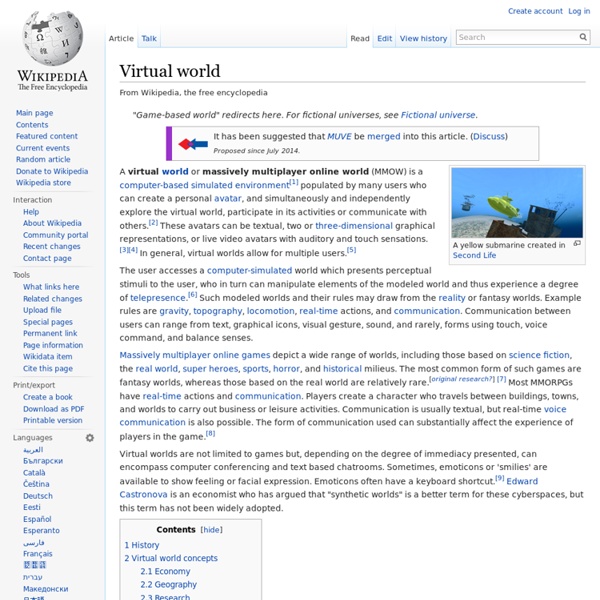Category:Virtual reality
From Wikipedia, the free encyclopedia Subcategories This category has the following 10 subcategories, out of 10 total. Pages in category "Virtual reality"
Day 129: Creating Prim Hair Part 1
Like Prim Shoes, Prim Hair is probably one of the most popular items that attach to your avatar. So I thought I might try my hand at making a set of prim hair and sharing my experience. This will be a multi-part tutorial.
Unity Web Player
+ New .COMs $7.49/yr plus 18 cents/yr ICANN fee. Discount based on new one-year registration prices as of 4/8/2011 with sale price reflected in your shopping cart at checkout. Discount applies to new registrations and renewals and cannot be used in conjunction with any other offer or promotion. Domains purchased through this offer will renew at regular price after the initial term has expired.
IBMs &neurosynaptic& chips are the closest thing to a synthetic brain yet
A nice, clear, and mostly correct statement. However, you are forgetting one thing: Those in power wish to stay in power. Those who have power wish to have more power. And those who have property that could suddenly not be "theirs" would be highly resistant to relinquishing said property.
Screenshots
Babblefrog@OSGRID Nebadon Key Gruin
Content Creation
From Second Life Wiki One of the most unusual features of the Second Life Virtual World is that any user can create new stuff that every one else can see and use. The ambitious can create things for sale. The artistic can create art. Monopoly players can buy and sell land using real money and hotels that avatars live in.
Jibe
If you have your own server, and don't need our hosting for your Jibe worlds, this option's for you. Purchasing a Jibe Project Kit non-hosted provides license for one to multiple developers to publish one to multiple worlds on your own servers. You can choose from several license level options, depending on the number of developers who will be working with Jibe, and the number of worlds you desire to publish. Concurrent Users:
Physicist proposes method to teleport energy
(PhysOrg.com) -- Using the same quantum principles that enable the teleportation of information, a new proposal shows how it may be possible to teleport energy. By exploiting the quantum energy fluctuations in entangled particles, physicists may be able to inject energy in one particle, and extract it in another particle located light-years away. The proposal could lead to new developments in energy distribution, as well as a better understanding of the relationship between quantum information and quantum energy.
RepRap Self-Replicating 3D Printer: Fuel The Revolution by Relative Design
What is the RepRap Project? RepRap is an open-source desktop 3D printer capable of printing plastic objects. Since many parts of RepRap are made from plastic and RepRap can print those parts, RepRap is a self-replicating machine - one that anyone can build given time and materials. It also means that - if you've got a RepRap - you can print lots of useful stuff, and you can print another RepRap for a friend. The RepRap project is all about making self-replicating machines, and making them freely available for the benefit of everyone.
Category:Virtual reality in fiction
From Wikipedia, the free encyclopedia Subcategories This category has the following 5 subcategories, out of 5 total. ► .hack (3 C, 11 P, 6 F) Pages in category "Virtual reality in fiction" The following 85 pages are in this category, out of 85 total.
~ How to make clothes in Second Life tutorial
There are lots of reasons to trying your hand at making clothes in Second Life. Maybe your an artsy person? want a new creative outlet? Maybe you need some clothes for yourself, or a friend in Second Life and don't want to pay the full linden price of an already made design?
How to Change Android Folder Icons - PCWorld
Android's folders are a great way to keep your home screens organized -- but let's face it, they aren't exactly exciting. Android's default folder icon is a plain-looking manilla box. And when you've gone to the trouble of pimping out your home screens, it can stick out like a sore thumb. That brings us to this week's Android Power reader question, which comes from folder-frustrated Android fan Nick C.



